10 of the best QWERTY smartphones from when hardware keyboards were cool
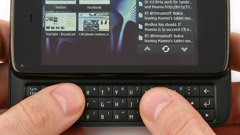
Launching later this month, the Android-based BlackBerry Priv comes with a feature that we rarely see on high-end smartphones these days: a hardware QWERTY keyboard. Taking advantage of multi-touch OSes and high-quality displays, most handset manufacturers have ditched hardware keyboards altogether, despite the fact that some users may still want them.
Seeing that the Priv is coming soon, we were hit by nostalgia and remembered many of the great QWERTY-equipped smartphones that were released throughout the years, starting over a decade ago. Join us below in taking a quick look at them, will you? In chronological order:
Released more than 10 years ago (in 2004, to be exact), the P910 was a high-end Sony Ericsson smartphone that succeeded the P900 from one year earlier, and the P800 from 2002. Running Symbian UIQ, the Sony Ericsson P910 offered a 2.9-inch resistive touchscreen display with 208 x 320 pixels, stylus pen, a VGA rear camera, and a 1000 mAh battery. Some of the features that its predecessors didn't have include 64 MB of internal memory, support for external memory cards, and HTML browsing. The QWERTY keyboard of the Sony Ericsson P910 was hidden on the other side of its normal, alphanumeric keyboard, being revealed with a flip.
A true mini computer of the last decade, the Nokia E90 Communicator was introduced in 2007 to succeed the bulky (but highly praised) Nokia 9500 Communicator from 2004. Based on Symbian S60, the E90 was the first in the Communicator series to have 3G connectivity and a GPS receiver. Like many other handsets at the time, the Nokia E90 Communicator had two displays (external and internal), plus two keyboards (also external and internal). The internal keyboard was a full QWERTY one, while the internal display accompanying it was a 4-inch, 800 x 352 pixels one. The E90 also featured Wi-Fi, a 332 MHz single core processor, 128 MB of internal memory, microSD card support, and a 3.2 MP rear camera.
Also known as AT&T Tilt, T-Mobile MDA Vario III, or O2 XDA Stellar, the HTC TyTN II was released in 2007 as an improvement over the original TyTN from 2006. Like the first model, the HTC TyTN II was a Windows Mobile handset with a 2.8-inch, 240 x 340 pixels resistive touchscreen display, stylus pen, and a sliding QWERTY keyboard - a pretty good one, too. 3G, Wi-Fi, GPS, a 3.2 MP rear camera and a VGA front-facing camera were also on board.
The first in BlackBerry's line of Bold smartphones, the Bold 9000 was a premium device introduced in 2008 - when BlackBerry was one of the world's top smartphone makers. The 2.6-inch, 480 x 320 pixels screen of the Bold 9000 wasn't touch-sensitive, but the handset had a great full QWERTY keyboard that made typing a breeze. Other features included a trackball, 3G connectivity, Wi-Fi, GPS, 128 MB of RAM, 1 GB of expandable internal memory, a 624 MHz single-core processor, and a 2 MP rear camera.
Available since October 2008 (in the US), the T-Mobile G1 / HTC Dream made history as the world's first Android smartphone. With its peculiar look, the G1 / Dream was not exactly a commercial success, but it opened the way for what was about to quickly become the most popular smartphone OS to date. Powered by a 528 MHz single-core CPU, the G1 had a 3.2-inch HVGA (320 x 480 pixels) touchscreen display, and a sliding QWERTY keyboard - more exactly, the screen was the one that was slid to reveal the keyboard. The device came with all the connectivity features that were normal for a respectable smartphone at the time (3G, Wi-Fi, GPS), plus 192 MB of RAM, 256 MB of internal memory, microSD card support, and a 3.2 MP rear camera.
Regarded by many as one of the best Windows Mobile smartphones of its time (2009), the HTC Touch Pro2 (also known as Tilt 2) had an excellent slide-out QWERTY keyboard accompanied by a 3.6-inch, 480 x 800 pixels tilting touchscreen display. The Touch Pro2 also featured a touch-sensitive zoom bar, 288 MB of RAM, 512 MB of expandable internal memory, a 528 MHz single-core processor, plus 3.2 MP and VGA cameras (on the rear and front, respectively).
Launched in mid-2009 in the US, the Palm Pre was the world's first webOS smartphone - representing a new beginning for Palm. The Pre became a hot seller at Sprint in the US, as it was a well made smartphone with attractive features, including a 3.1-inch, 320 x 480 pixels touchscreen display, and a portrait slide-out QWERTY keyboard. Powered by a 600 MHz single-core processor, the Palm Pre offered 256 MB of RAM and 8 GB of storage space, but there was no microSD card support. The Pre had several successors (Pre Plus, Pre 2, and Pre 3), but these failed to gain popularity. Eventually, Palm was sold to HP, while webOS was acquired by LG, which is now using it for smart TVs and wearable devices.
The original Motorola Droid (also known as Milestone - GSM variant) is perhaps best remembered as the first Android smartphone that was marketed as a viable iPhone alternative. In 2009, the iPhone was an AT&T-exclusive device in the US, so it made perfect sense for Verizon to search for an alternative. And it found a great one in Motorola's first Droid, a handset released in late 2009 helped by a "Droid Does" marketing campaign - which underlined the things that iPhones couldn't do at the time (like multitasking). Compared to the 2009 iPhone 3GS, the Droid had a larger screen with a higher pixel resolution (3.7 inches, 480 x 854 pixels). Of course, the handset also featured a sliding QWERTY keyboard.
The Motorola Droid had various well received successors. In fact, Verizon's Droid brand is alive and well today, though none of the current handsets using it (like the Droid Turbo or Droid Maxx) offer QWERTY keyboards.
Presented as an "internet tablet", the Nokia N900 was first announced on 2008, but it only became available in November 2009. Among other things, the N900 featured a 3.5-inch touchscreen display with 480 x 800 pixels, a 3-row sliding QWERTY keyboard, and a 5 MP Carl Zeiss rear camera. The device was praised for its web browser, which included support for Flash. However, since the N900 ran Maemo, there weren't too many applications available for it. Eventually, Maemo was merged with Intel's Moblin to form MeeGo - which was terminated in favor of Tizen. Currently, Jolla's Sailfish OS is based on MeeGo.
One of the latest high-end smartphones to run the now-defunct Symbian OS, the Nokia E7 was released in early 2011, when Nokia announced plans to use Microsoft's Windows Phone as its main mobile platform. That alone made the E7 a device that some may have been reluctant to buy. Even so, the E7 was a notable handset, having an anodized aluminum body, a 4-row QWERTY keyboard, a 4-inch AMOLED display with 360 x 640 pixels, and an 8 MP rear camera.
Have you owned any QWERTY smartphones? Which one was your favorite? Or least favorite?
Released more than 10 years ago (in 2004, to be exact), the P910 was a high-end Sony Ericsson smartphone that succeeded the P900 from one year earlier, and the P800 from 2002. Running Symbian UIQ, the Sony Ericsson P910 offered a 2.9-inch resistive touchscreen display with 208 x 320 pixels, stylus pen, a VGA rear camera, and a 1000 mAh battery. Some of the features that its predecessors didn't have include 64 MB of internal memory, support for external memory cards, and HTML browsing. The QWERTY keyboard of the Sony Ericsson P910 was hidden on the other side of its normal, alphanumeric keyboard, being revealed with a flip.
A true mini computer of the last decade, the Nokia E90 Communicator was introduced in 2007 to succeed the bulky (but highly praised) Nokia 9500 Communicator from 2004. Based on Symbian S60, the E90 was the first in the Communicator series to have 3G connectivity and a GPS receiver. Like many other handsets at the time, the Nokia E90 Communicator had two displays (external and internal), plus two keyboards (also external and internal). The internal keyboard was a full QWERTY one, while the internal display accompanying it was a 4-inch, 800 x 352 pixels one. The E90 also featured Wi-Fi, a 332 MHz single core processor, 128 MB of internal memory, microSD card support, and a 3.2 MP rear camera.
Also known as AT&T Tilt, T-Mobile MDA Vario III, or O2 XDA Stellar, the HTC TyTN II was released in 2007 as an improvement over the original TyTN from 2006. Like the first model, the HTC TyTN II was a Windows Mobile handset with a 2.8-inch, 240 x 340 pixels resistive touchscreen display, stylus pen, and a sliding QWERTY keyboard - a pretty good one, too. 3G, Wi-Fi, GPS, a 3.2 MP rear camera and a VGA front-facing camera were also on board.
The first in BlackBerry's line of Bold smartphones, the Bold 9000 was a premium device introduced in 2008 - when BlackBerry was one of the world's top smartphone makers. The 2.6-inch, 480 x 320 pixels screen of the Bold 9000 wasn't touch-sensitive, but the handset had a great full QWERTY keyboard that made typing a breeze. Other features included a trackball, 3G connectivity, Wi-Fi, GPS, 128 MB of RAM, 1 GB of expandable internal memory, a 624 MHz single-core processor, and a 2 MP rear camera.
Available since October 2008 (in the US), the T-Mobile G1 / HTC Dream made history as the world's first Android smartphone. With its peculiar look, the G1 / Dream was not exactly a commercial success, but it opened the way for what was about to quickly become the most popular smartphone OS to date. Powered by a 528 MHz single-core CPU, the G1 had a 3.2-inch HVGA (320 x 480 pixels) touchscreen display, and a sliding QWERTY keyboard - more exactly, the screen was the one that was slid to reveal the keyboard. The device came with all the connectivity features that were normal for a respectable smartphone at the time (3G, Wi-Fi, GPS), plus 192 MB of RAM, 256 MB of internal memory, microSD card support, and a 3.2 MP rear camera.
Regarded by many as one of the best Windows Mobile smartphones of its time (2009), the HTC Touch Pro2 (also known as Tilt 2) had an excellent slide-out QWERTY keyboard accompanied by a 3.6-inch, 480 x 800 pixels tilting touchscreen display. The Touch Pro2 also featured a touch-sensitive zoom bar, 288 MB of RAM, 512 MB of expandable internal memory, a 528 MHz single-core processor, plus 3.2 MP and VGA cameras (on the rear and front, respectively).
Launched in mid-2009 in the US, the Palm Pre was the world's first webOS smartphone - representing a new beginning for Palm. The Pre became a hot seller at Sprint in the US, as it was a well made smartphone with attractive features, including a 3.1-inch, 320 x 480 pixels touchscreen display, and a portrait slide-out QWERTY keyboard. Powered by a 600 MHz single-core processor, the Palm Pre offered 256 MB of RAM and 8 GB of storage space, but there was no microSD card support. The Pre had several successors (Pre Plus, Pre 2, and Pre 3), but these failed to gain popularity. Eventually, Palm was sold to HP, while webOS was acquired by LG, which is now using it for smart TVs and wearable devices.
The original Motorola Droid (also known as Milestone - GSM variant) is perhaps best remembered as the first Android smartphone that was marketed as a viable iPhone alternative. In 2009, the iPhone was an AT&T-exclusive device in the US, so it made perfect sense for Verizon to search for an alternative. And it found a great one in Motorola's first Droid, a handset released in late 2009 helped by a "Droid Does" marketing campaign - which underlined the things that iPhones couldn't do at the time (like multitasking). Compared to the 2009 iPhone 3GS, the Droid had a larger screen with a higher pixel resolution (3.7 inches, 480 x 854 pixels). Of course, the handset also featured a sliding QWERTY keyboard.
Presented as an "internet tablet", the Nokia N900 was first announced on 2008, but it only became available in November 2009. Among other things, the N900 featured a 3.5-inch touchscreen display with 480 x 800 pixels, a 3-row sliding QWERTY keyboard, and a 5 MP Carl Zeiss rear camera. The device was praised for its web browser, which included support for Flash. However, since the N900 ran Maemo, there weren't too many applications available for it. Eventually, Maemo was merged with Intel's Moblin to form MeeGo - which was terminated in favor of Tizen. Currently, Jolla's Sailfish OS is based on MeeGo.
One of the latest high-end smartphones to run the now-defunct Symbian OS, the Nokia E7 was released in early 2011, when Nokia announced plans to use Microsoft's Windows Phone as its main mobile platform. That alone made the E7 a device that some may have been reluctant to buy. Even so, the E7 was a notable handset, having an anodized aluminum body, a 4-row QWERTY keyboard, a 4-inch AMOLED display with 360 x 640 pixels, and an 8 MP rear camera.
Have you owned any QWERTY smartphones? Which one was your favorite? Or least favorite?
Follow us on Google News
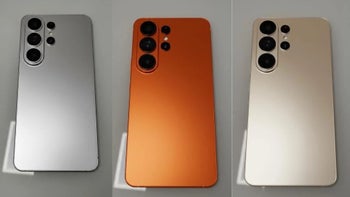
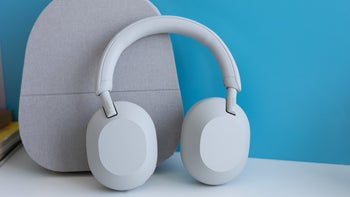
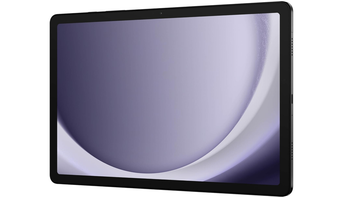

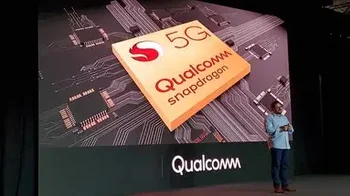
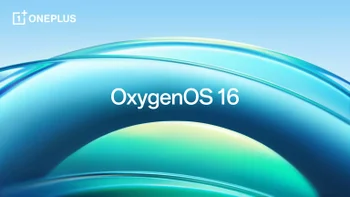
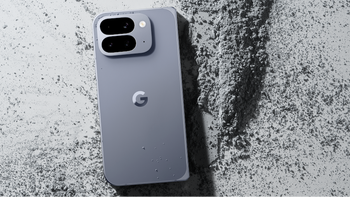
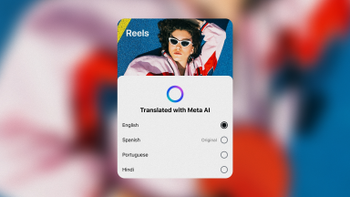
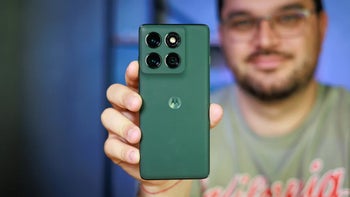
![If you woke up to SOS mode on your Verizon phone, you weren't alone [UPDATED]](https://m-cdn.phonearena.com/images/article/174761-wide-two_350/If-you-woke-up-to-SOS-mode-on-your-Verizon-phone-you-werent-alone-UPDATED.webp)


Things that are NOT allowed:
To help keep our community safe and free from spam, we apply temporary limits to newly created accounts: